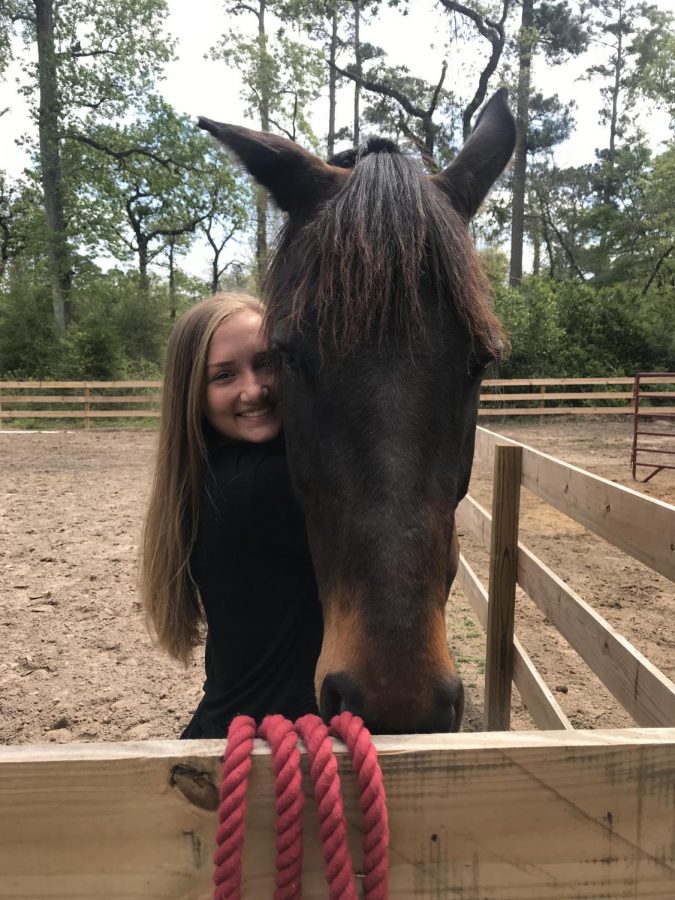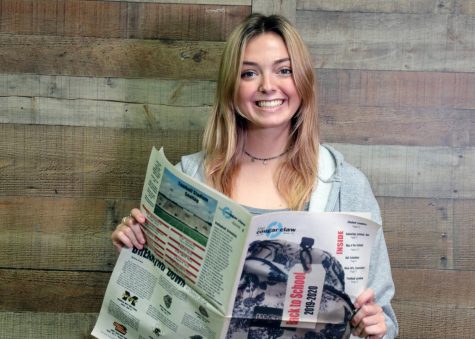Student forms unbreakable bond with horse

Photo courtesy of Lauren Schindewolf
Schindewolf and her horse
March 21, 2019
A unique bond has formed between Lauren Schindewolf and her horse, Bailey.
“My horse is my best friend,” Schindewolf said.
Schindewolf works by herself to train her horse to do many different tricks, where Bailey should be able to do basic movements that are smooth.
“I am focusing on teaching her the basics of dressage,” Schindewolf said, “it shows the horse’s ability to maneuver and control their body movements.”
In order to start teaching her a new trick, there is more than just a few steps Schindewolf must take to succeed.
“I have to research different methods,” Schindewolf said, “you can’t just have one method because it will never work the first time.”
Another important aspect of training a horse is the ability to be flexible and change accordingly.
“You have to figure out which way will work,” Schindewolf said, “the way you’re used to might not be the way it’s going to be done.”
She’ll start by putting her on a lunge line, which is a rope connected to the horse that allows them to move in a circle within a certain distance from the trainer in the middle. Then Schindewolf will work Bailey in small circles while riding to get her used to the motions.
“You keep doing it over and over, [and] every time she attempts it you reward her,” Schindewolf said. “eventually she’ll start putting it together.”
In order for Bailey to understand what she wants, Schindewolf uses positive and negative reinforcement.
“When she does something good you give her a break,” Schindewolf said, “if she gets going too fast you have to stop her, back her up, and restart.”
Schindewolf works with her horse 2-3 times per week, for up to 2 hours at a time. The amount of time they spend together allows them to be able to understand each other well.
“You learn each other’s ticks,” Schindewolf said, “it gets to a point when you can tell exactly what kind of ride you’re going to have by the way she’s walking.”
An average training session for Schindewolf and her horse starts with Bailey warming up on the lunge line, and transitions into riding.
“Once you get on, your warm-up should reflect what you want to do with her,” Schindewolf said, “start with an easier version of it to set her mind frame for what she’s going to learn that day.”
But while working with Bailey, it isn’t all fun and games.
“We are both very stubborn,” Schindewolf said, “we both want it done our way and we both want it done that moment.”
Not only is it a challenge to get past Bailey’s headstrong personality, but it’s also hard for Schindewolf to persevere and have to try time and time again.
“The hardest part is knowing that you’re going to have to fail before you can go further,” Schindewolf said. “It’s also hard knowing while you’re riding that you’ll get frustrated.”
But from the struggle, Schindewolf has learned much about horses and how to work with them.
“If your horse isn’t giving you the answer you want,” Schindewolf said, “you either asked the question wrong or are asking the wrong question.”
Not only does working with Bailey teach the horse new tricks, but it also provides vital life skills for Schindewolf.
“It’s a lot of leadership, teamwork, being flexible, and commitment,” she said.
The motivation for Schindewolf comes from a place of love.
“You want her to succeed,” Schindewolf said, “because it feels like you promised it to her and you owe it to her.”
Although Schindewolf isn’t competing with Bailey now, she hopes to be able to soon. But ultimately, she wants her horse to be happy and willing to learn.
“I want her to enjoy doing it and I want her to want to do it,” Schindewolf said. “And winning wouldn’t hurt.”











